Wall sconce doorbell cover
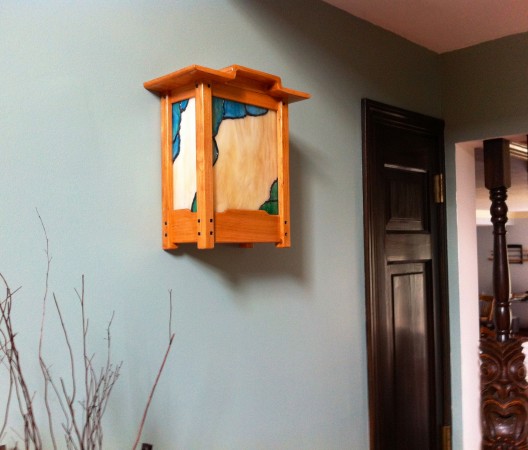
During our recent entrance way renovations I had a lot of time to develop a hatred of the look of our doorbell. It’s a hunk of plastic covered in gaudy designes.
Having been long inspired by the Greene & Greene wall sconces I decided to embark on making my own as a cover to the doorbell hardware. I’m NOT a stained glass artist and as I looked at what went into making a piece I realized I didn’t have the time to learn (on this project, but I’ll definitely do so in the future).
The Wood: The wooden parts of the sconce are your basic Greene & Greene woodworking. It’s all just frame and pannel constructions with groves, mortices & tenons. The lighter wood is my standard Cherry with liberal used of ebony plugs (I had to batch out 18 ebony plugs for this project. This video by William Ng is invaluable is speeding up this process!!!). The top I carved out of a solid block of Cherry utilizing a router, rasps & carving chisels.
The Glass: In our last house the former owner has done some wonderful stained glass looking artwork on a number of our windows utilizing a product called Gallery Glass. Would this product fool someone that knows stained glass? Not even close. But it really does come out nice looking, and unless someone looks really closely it’s very hard to spot that it’s not the real thing. So I picked up some stained glass for my base piece and used the Gallery Glass as color gels on top of it.
As for lighting… since I’m using this as a doorbell hardware cover I didn’t have room for any kind of traditional bulb. So instead I used LED Flexible Light Strip and a 30 Watt 12v LED Power Supply Driver. I cut a hole in the wall behind the doorbell hardware and stashed the transformer inside the wall and ran a 110v line to it from a nearby outlet. After that it was just a matter of peel and stick the LEDs to the doorbell hardware and cutting to length.
Right now I have a photo sensor controlling the light, unfortunately the entranceway doesn’t get quite enough sun many days so the light is almost always on. So I’m going to swap it out with an analog timer control.
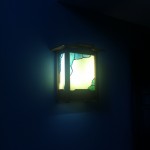


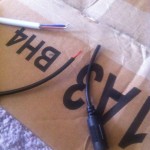
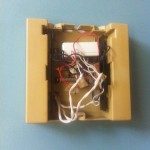
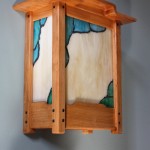
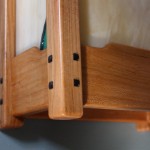
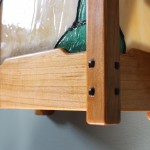
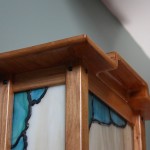
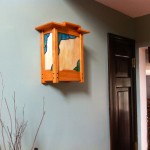

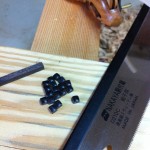
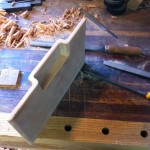
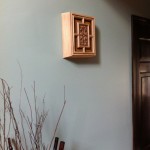
I found your post via twitter. Very handsome work and a creative idea. Years ago, I made a wall mounted clock which also hid our ugly door bell.
Jeff
Would it be possible for you to wire up the lighting to turn on when some one rings the the door bell?
You could. The doorbell runs on 9v DC but has very low amperage. The LED’s run on 12v DC but pull more amps. So you would have to still power them off of an AC to DC transformer… but you could certainly utilize a relay.
The relay could be powered off the 9v circuit and that could trigger the 12v circuit… but then the light would only go on while the doorbell itself was pressed. So you would probably want to add some sort of timing circuit that would flash the light for X-number of seconds or something when triggered by the doorbell press.
How did you attach the top to the sides? I saw a Greene & Greene inglewood sconce from the Gamble House I’d like to try and make.
Thanks,
Lenny
Dowels. I drilled holes in the vertical members and 4 holes in the top of the sconce. I also glued 2 of the top horizontals to the top. (the ones that dont have conflicting grain direction).
Hello
Love this door bell cover. Can you tell me the size of it? and the size of the glass
Thanks Matt